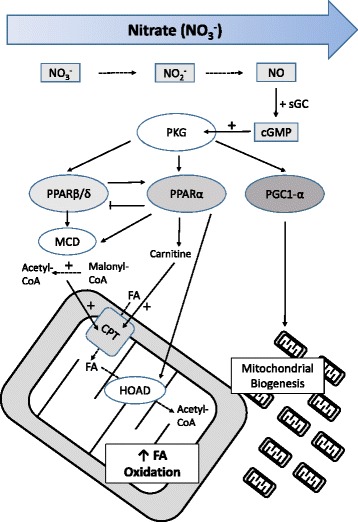Fig. 7.

Schematic outlining the proposed mechanism underlying the effect of dietary nitrate on fatty acid (FA) oxidation and mitochondrial biogenesis in skeletal muscle. Nitrate (NO3 −) is sequentially reduced to nitrite (NO2 −) and nitric oxide (NO), which activates soluble guanylate cyclase. Thus, nitrate dose-dependently increases cellular cGMP, activating protein kinase G. At low doses of nitrate, PPARβ/δ levels increase, increasing expression of CPT1 and lowering malonyl-CoA, increasing FA oxidation. At intermediate doses of nitrate, induction of PPARα augments these changes and increases carnitine levels, further increasing FA oxidation. Meanwhile, PPARβ/δ expression is repressed by PPARα activation. At higher doses, increased expression of 3-hydroxyacyl CoA dehydrogenase occurs alongside elevated citrate synthase, indicating mitochondrial biogenesis, which further enhances muscle capacity for FA oxidation
